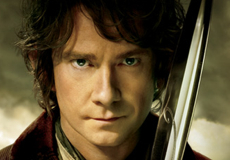HPA 2018: RealD’s TrueMotion Finesses HFR Footage in Post
February 23, 2018
At the HPA Tech Retreat, RealD senior scientist Tony Davis and cinematographer Bill Bennett, ASC shot and mastered imagery in a variety of high frame rates. One of the chief challenges, said Bennett, is achieving a result with a cinematic aesthetic. “As we move towards HDR displays, we’ve discovered that high contrast images tend to judder as they move across the screen,” said Bennett. The two proposed a solution whereby images are acquired at a very high frame rate, but then adjusted in post. Continue reading HPA 2018: RealD’s TrueMotion Finesses HFR Footage in Post

